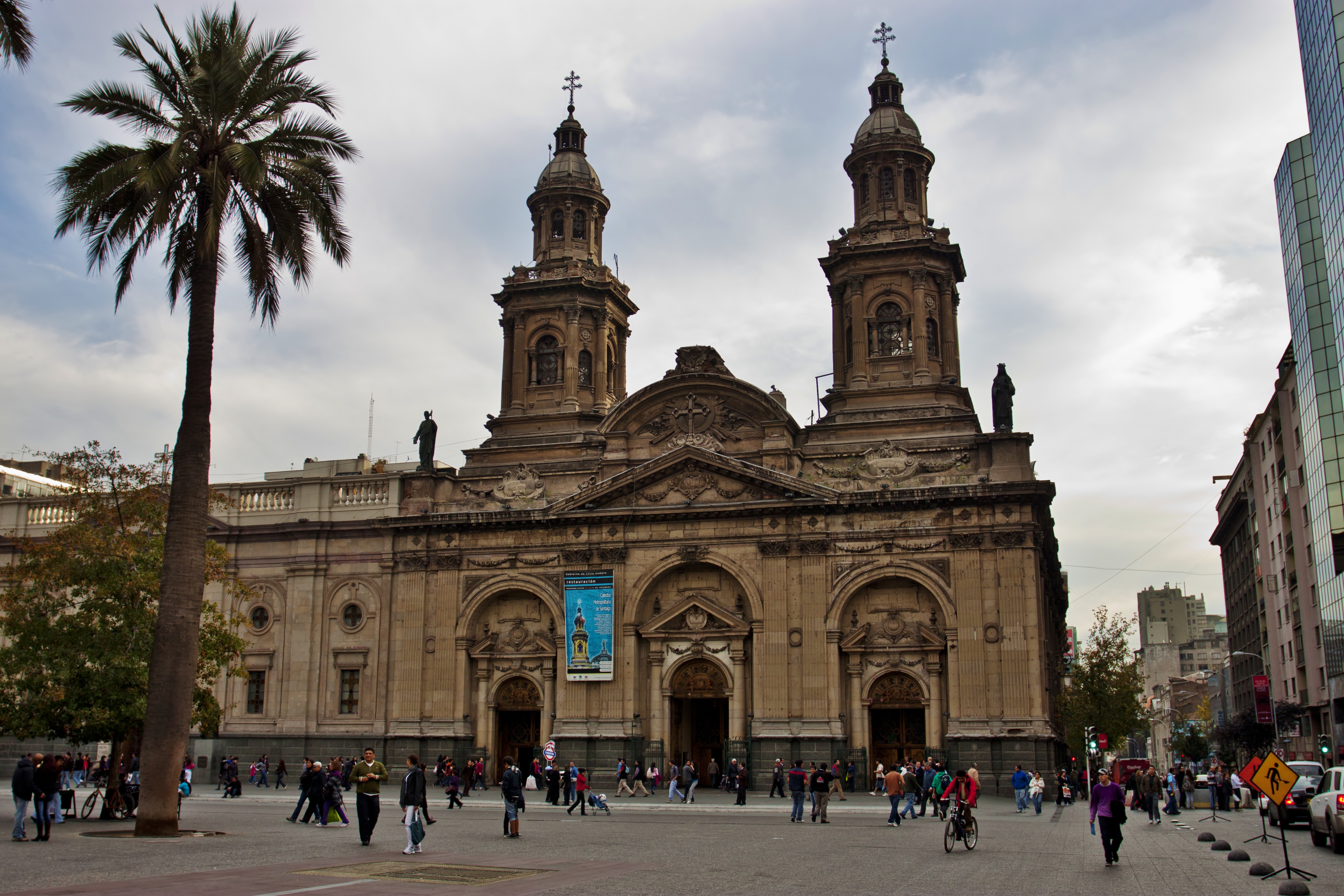Metropolitan Cathedral of Santiago on:
[Wikipedia]
[Google]
[Amazon]
 Santiago Metropolitan Cathedral () is the
Santiago Metropolitan Cathedral () is the
The cathedral, located in the city's historic center, faces the northwest corner of Santiago's Plaza de Armas and stands near the
Website for the Cathedral
Roman Catholic churches completed in 1800 Churches in Santiago, Chile Roman Catholic cathedrals in Chile 1800 establishments in the Captaincy General of Chile 19th-century Roman Catholic church buildings in Chile Neoclassical church buildings in Chile {{RC-cathedral-stub
 Santiago Metropolitan Cathedral () is the
Santiago Metropolitan Cathedral () is the seat
A seat is a place to sit. The term may encompass additional features, such as back, armrest, head restraint but also headquarters in a wider sense.
Types of seat
The following are examples of different kinds of seat:
* Armchair, a chair ...
of the Archbishop of Santiago de Chile
Santiago (, ; ), also known as Santiago de Chile, is the capital and largest city of Chile as well as one of the largest cities in the Americas. It is the center of Chile's most densely populated region, the Santiago Metropolitan Region, who ...
, currently Celestino Aós Braco
Celestino Aós Braco O.F.M.Cap. (born 6 April 1945) is a Spanish-born prelate of the Catholic Church and the Archbishop of Santiago, in Chile. He was appointed Apostolic Administrator of Santiago by Pope Francis on 23 March 2019, then Archbis ...
, and the center of the Archdiocese of Santiago de Chile. Construction of the Neoclassical cathedral began in 1753 and ended in 1799. The architect was the Italian Gioacchino Toesca. Further alterations ordered at the end of the 19th century gave it its present appearance. Previous cathedrals in the archdiocese had been destroyed by earthquakes.Iglesia Catedral MetropolitanaThe cathedral, located in the city's historic center, faces the northwest corner of Santiago's Plaza de Armas and stands near the
Palacio Arzobispal de Santiago
The Palacio arzobispal of Santiago is the administrative seat of the Arquidiócesis de Santiago de Chile. It stands, along with the Parroquia El Sagrario and the Catedral Metropolitana, on the west side of the Plaza de Armas, in the histori ...
, the administrative center for the archdiocese. The cathedral is also close to the Parroquia El Sagrario, a Catholic church and a Chilean national monument.
Santiago Metropolitan Cathedral is of a Baroque
The Baroque (, ; ) is a style of architecture, music, dance, painting, sculpture, poetry, and other arts that flourished in Europe from the early 17th century until the 1750s. In the territories of the Spanish and Portuguese empires including ...
style, with many ornaments, frescos, and gilded columns. The two towers of the cathedral were added almost a whole century later, showing layers of history in its architecture.
The cathedral, built over 220 years ago, did not have the kind of technology or considerations that modern buildings today have, particularly regarding earthquakes. Since Chile is on the Atacama fault
The Atacama Fault Zone (AFZ) is an extensive system of faults cutting across the Chilean Coastal Cordillera in Northern Chile between the Andean Mountain range and the Pacific Ocean. The fault system is North-South striking and runs for more t ...
line, it experiences quite a lot of earthquakes. Large masonry buildings like the Metropolitan Cathedral were not built with earthquake considerations, and since masonry has low tensile strength
Ultimate tensile strength (UTS), often shortened to tensile strength (TS), ultimate strength, or F_\text within equations, is the maximum stress that a material can withstand while being stretched or pulled before breaking. In brittle materials ...
the building has suffered damage and destruction. Due to the destruction and rebuilding/remodeling, the cathedral became a national historic monument in 1951.
Because of the earthquake damage, tests were done to the structure of the building to see if any structural updates were necessary, which there were. Tests were required to carry out any sort of renovations or updates to the cathedral.
References
External links
Website for the Cathedral
Roman Catholic churches completed in 1800 Churches in Santiago, Chile Roman Catholic cathedrals in Chile 1800 establishments in the Captaincy General of Chile 19th-century Roman Catholic church buildings in Chile Neoclassical church buildings in Chile {{RC-cathedral-stub